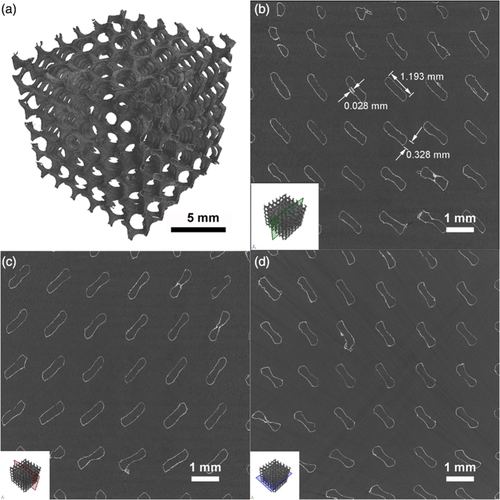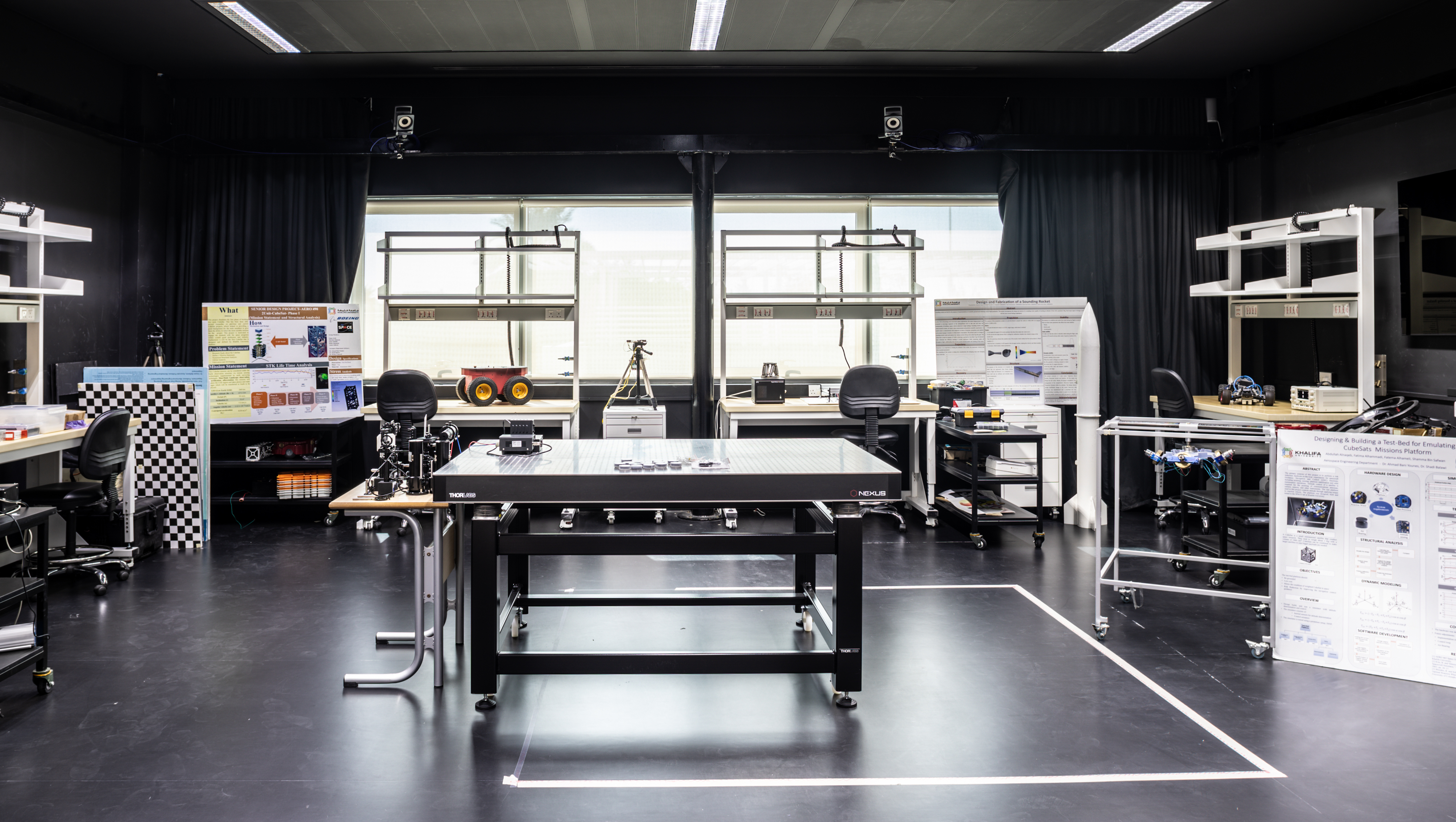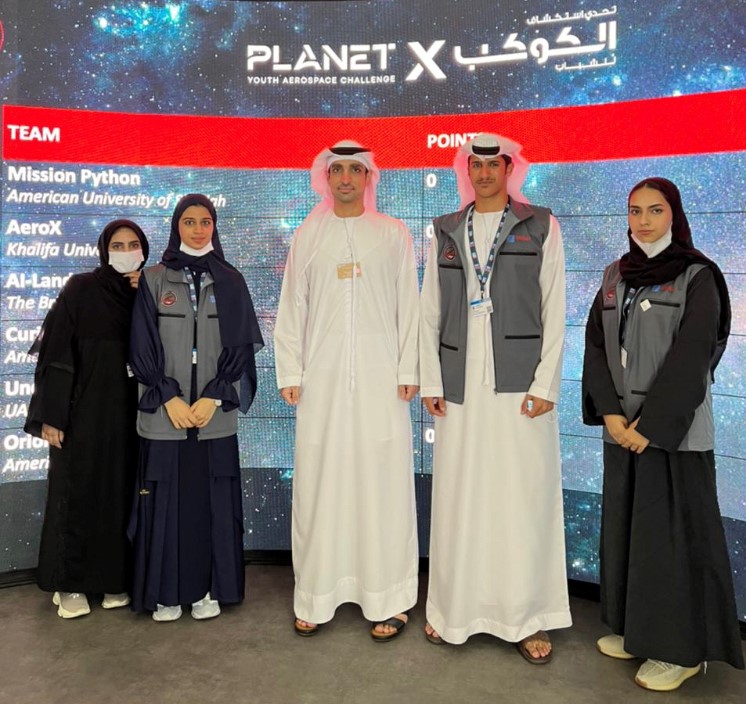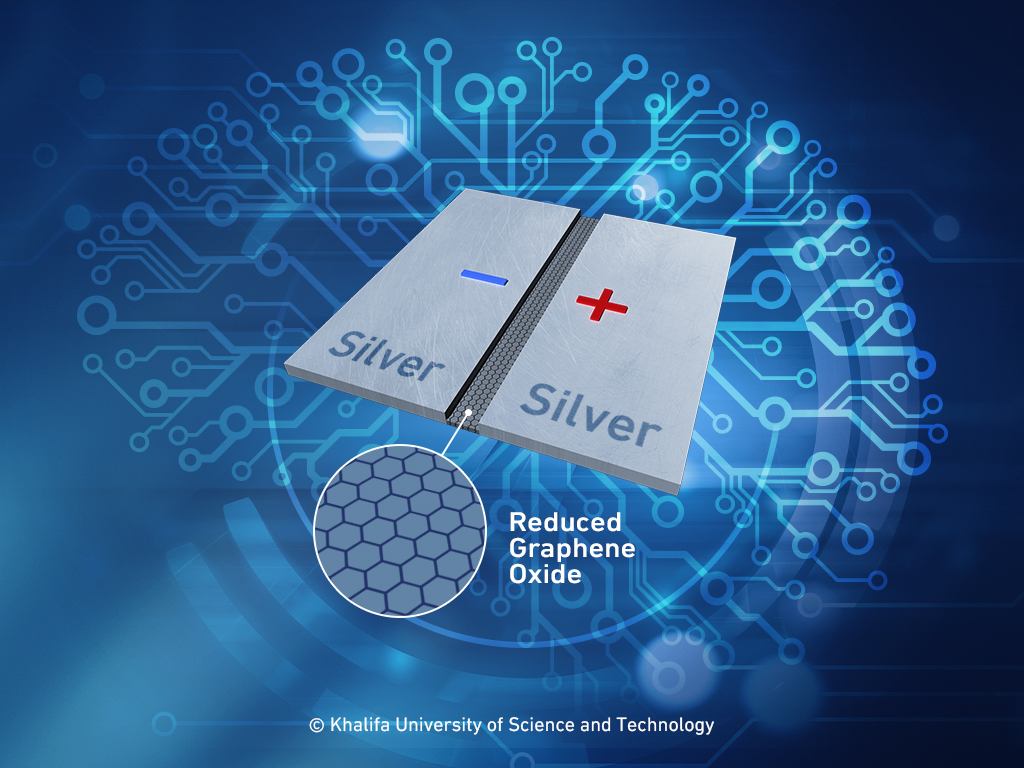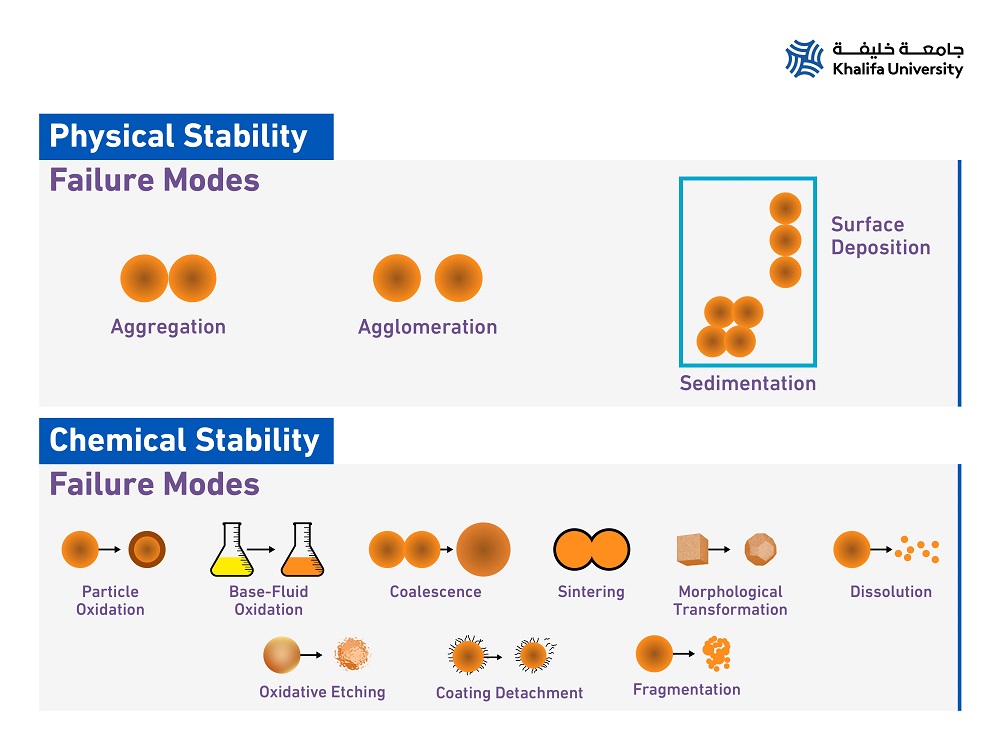
Scientists at Khalifa University are researching how solar nanofluids can be stabilized for use in concentrating solar power plants to generate clean electricity.
Concentrating solar power (CSP) plants – which use energy from the sun in the form of heat to generate clean electricity – could one day be used to meet a significant share of the world’s energy needs. But CSP faces a challenge: many power plants still rely on heat transfer fluids that were developed in the 1980s and are limited to lower operating temperatures.
Heat transfer fluids bring the heat collected from solar energy to a generator, where it is transformed into electricity. The hotter the fluid can get, the more its particles move and the higher its thermal energy, which translates into more efficient power generation. Nanofluids have been eyed as advanced heat transfer fluids for some time now, as the nanoparticles suspended in the fluid increase the fluid’s absorption surface area and thermal conductivity. However, solar nanofluids are challenged by instability, mainly caused by the clustering of nanoparticles within the fluid.
Now, scientists at Khalifa University are researching how these nanofluids can be stabilized, which is key to accelerating their uptake in CSP plants, and other industrial applications, around the world.
Dr. Omar Sharaf, Post-Doctoral Fellow at Khalifa University, with Dr. Eiyad Abu-Nada, Professor of Mechanical Engineering, and Dr. Robert Taylor, Associate Professor of Mechanical and Manufacturing Engineering at University of New South Wales, Sydney, recently published a review paper in Physics Reports covering the topic of solar nanofluids to investigate their colloidal and chemical stability in various applications.
“Nanofluids are engineered colloidal dispersions with solid inorganic nanoparticles,” explained Dr. Sharaf. “They have superior thermophysical properties that make them excellent materials for numerous engineering applications, including solar power generation.”
“But while a few review articles have previously targeted the issue of stability for thermal nanofluids, which allow for more effective heat transfer, there are no review articles covering the stability of solar nanofluids, which function as both solar absorbers and heat carriers,” added Dr. Abu-Nada. “Therefore, our objective was to provide a much-needed, state-of-the-art review of the stability of solar nanofluids and investigate the modern techniques and strategies to overcome their limitations. We’ve made an important step towards understanding the state-of-the-art in the development of resilient, long-term stable solar nanofluids for use in photothermal conversion applications.”
Nanofluids are increasingly used in applications requiring quick and effective heat transfer, including in solar thermal applications. They absorb the solar irradiance passing through them, which allows the base fluid to effectively capture and transport solar radiation. The more solar energy the nanofluid absorbs, the more efficient the photothermal conversion process, with the solar thermal system’s efficiency governed by the effectiveness of the photothermal conversion and heat transfer processes.
An ideal direct-absorption solar collector will absorb the concentrated solar radiation, convert that into heat, and transfer the heat to the intended application. Nanoparticles allow for several orders of magnitude higher heat transfer when absorbing solar radiation directly within the surrounding fluid, simply due to the small size and huge specific surface area of the nanoparticles.
“Despite their favorable thermophysical properties, the key challenge still hindering the widespread use and commercialization of solar nanofluids are issues pertaining to their dispersion and chemical stability,” explained Dr. Sharaf. “This is a result of operating for prolonged periods of time under the rough outdoor conditions encountered in photothermal conversion devices, such as elevated temperature, intense solar radiation, and thermal and solar cycling. Such conditions destabilize the nanofluids, eventually leading to those prized properties being significantly altered.”
Nanoparticles have exceptionally high surface-to-volume ratios and remain in a high energy state. As the particles move to reduce their surface energies, they cluster together, which reduces their efficiency. A nanofluid’s ability to resist clustering is known as its colloidal stability. Its chemical stability is determined by the ability to resist undesired chemical transformations over time.
“In other words, a stable nanofluid is one that retains its optical and thermal properties of interest after frequent use in its intended application,” explained Dr. Abu-Nada. “Depending on the nature of the solar photothermal conversion device, a solar nanofluid can be exposed to a number of destabilizing factors. Understanding these factors is crucial for designing a stable nanofluid.”
The working temperature of a solar nanofluid could be high during the day and low during the night due to solar cycling, reaching very high temperatures of much more than 400C in photothermal devices operating under concentrated solar radiation. Temperature variations can trigger sharp transitions from stability to instability, with parts of the nanofluid known to partially or even completely decompose and detach from the particles at working temperatures as low as 60C.
“In sunny, desert climates, where solar collectors are likely to be deployed, the difference between nanofluid temperature at daytime and night time could be significant, especially when operating under concentrated solar radiation,” explained Dr. Abu-Nada.
“Additionally, although it constitutes a small portion of the solar radiation hitting the Earth, UV radiation can cause severe damage to the constituents of a nanofluid, especially if optically concentrated. Prolonged UV radiation exposure is more often than not overlooked as a major destabilizing factor, because upon testing under natural sunlight for a limited period of time, the levels of exposure are not usually enough to induce too much damage. However, upon prolonged exposure, it is clear that UV exposure can have hugely detrimental effects.”
As energy demand across the globe increases, harnessing renewable energy remains essential. Concentrating sunlight is an effective way to generate higher output and nanofluids can play a crucial role in the development of these technologies.
Jade Sterling
Science Writer
4 August 2020


